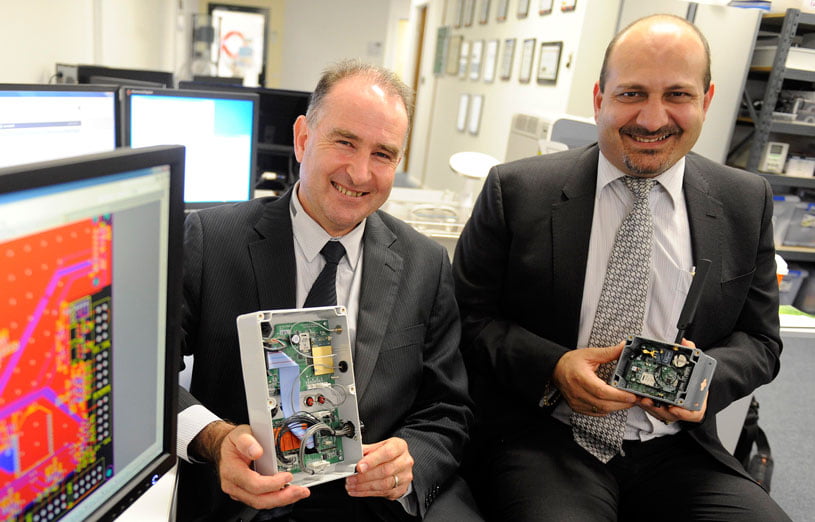CEDA and Australia’s Innovation Challenge
CEDA, or the Committee for Economic Development of Australia, run regular industry sessions to discuss topics of national economic importance. The latest was a lunchtime session covering the benefits of Innovation and also some of the challenges we need to overcome to take advantage of Innovation in Australia.
Here are videos of the panel discussion which raise a lot of excellent points. They are split into 2 due to their length.
Below I cover my take on some of the areas covered both before and during the panel discussion.
Innovation in Job Hunting
Job hunting, or seeking, is a two way problem. Potential employees want a good job and potential employers want good employees. Should be simple, right?
Doug Blue of SEEK shared some changes in the jobs market. SEEK used to just place job advertisements on a website. Now they have moved to employment fulfilment with up to 70% of job placements being through their services. This is typical of the shift in value creation that is happening all over the world.
A recent survey in Australia shows that 76% of people do not like their current job.
Innovation in Governance
Glenys Beauchamp PSM, of the Department of Industry, Innovation and Science, shared statistics and perspectives on the local economy. This is a summary of what was a very comprehensive and competent presentation.
The OECD statistics show that up to 50% of new jobs are due to Innovation. So this is an important topic for national growth. And to add more weight to the argument, 60% of productivity gains are due to Innovation.
Australia’s GDP growth has remained flat since 2011 and if this continues then our standard of living will start to fall.
Innovative businesses grow faster, have a more diverse range of market offerings, and create more jobs in them and around them than businesses which are not Innovation focused.
Drivers for Innovation:
- High proportion of tertiary qualified young adults
- High standard of research capability
And a few challenges:
- Low rates of disruptive Innovation
- Reducing investment for Innovation
- Low levels of venture and early stage investment
- Lowest level of Collaboration with universities and publicly funded research organisations in the OECD
- Low Collaboration in general
The Australian Government is looking at all options to improve this including funding schemes not based on grants, big science infrastructure, tax incentives, entrepreneurs programs and simplifying engagement between business and publicly funded organisations.
Innovation Panel
Lunch was followed by a panel session. The panel was:
- Glenys Beauchamp PSM – Department of Industry, Innovation and Science
- Geoff Culbert – GE Australia, NZ, Papua New Guinea
- Andrew Smith – Shell Australia
- Andy Vessey – AGL
This is a summary of the discussion.
Innovation can’t just be about improving core business output, it also has to have spread and it has to be able to cross organisational and industry boundaries.
One big challenge is moving to a net zero emissions while increasing energy availability. So clean energy generation is a key and Australia is well placed to be exploring that.
Consumers of tomorrow will be making informed choices so those businesses that don’t educate and inform their customers will lose them to businesses that do. Many traditional businesses and industries are ripe for digital disruption.
GE see software as key to their digital industrial product range. IoT, or the Internet of Things, is key to the adding of more value.
Shell are looking sideways at every industry they can to identify technologies they can harness in their industry. And they find Australia has many excellent researchers and businesses that can be tapped for solutions to problems that they don’t yet have a satisfactory answer for.
There is a role for Government to get the macro economic conditions right to encourage businesses to act through appropriate incentives. But Government also needs to change its own behaviour to be able to be a part of the future rather than living in a bureaucratic past.
Australia was outraged that we came 10th in the medals tally at the Olympic Games yet there is no outrage about our abysmally low Collaboration and business ratings! How do we get the bigger conversation going at the citizen level?
It is about investment level and investment focus. We value sporting success so we invest. To do better we have to either invest more or invest smarter. It is the same with Innovation and Collaboration. The real issue is where will the funding come from, and exactly how will it be applied. No-one seems to be addressing the lack of funding in a serious way.
Intellectual Property is no longer the main game, nor is data. It is the insights you get from data that is more important. GE have made their IoT operating system, Predix, open source because it is the leverage you get from it that is valuable, not just owning it. And it could also allow others to design devices that can readily fit into the GE ecosystem.
Innovation Summary
For me, the key points that keep coming up are:
- Low Collaboration is holding us back. And this is a cultural issue. So no amount of money can fix that. We have to address the culture itself.
- Everyone agrees a lot more money is needed and should be invested. No one agrees to offer it.
- Business models are still the biggest area for Innovation and we should keep pushing the boundaries on business models
Successful Endeavours specialise in Electronics Design and Embedded Software Development, focusing on products that are intended to be Made In Australia. Ray Keefe has developed market leading electronics products in Australia for more than 30 years. This post is Copyright © 2016 Successful Endeavours Pty Ltd.











